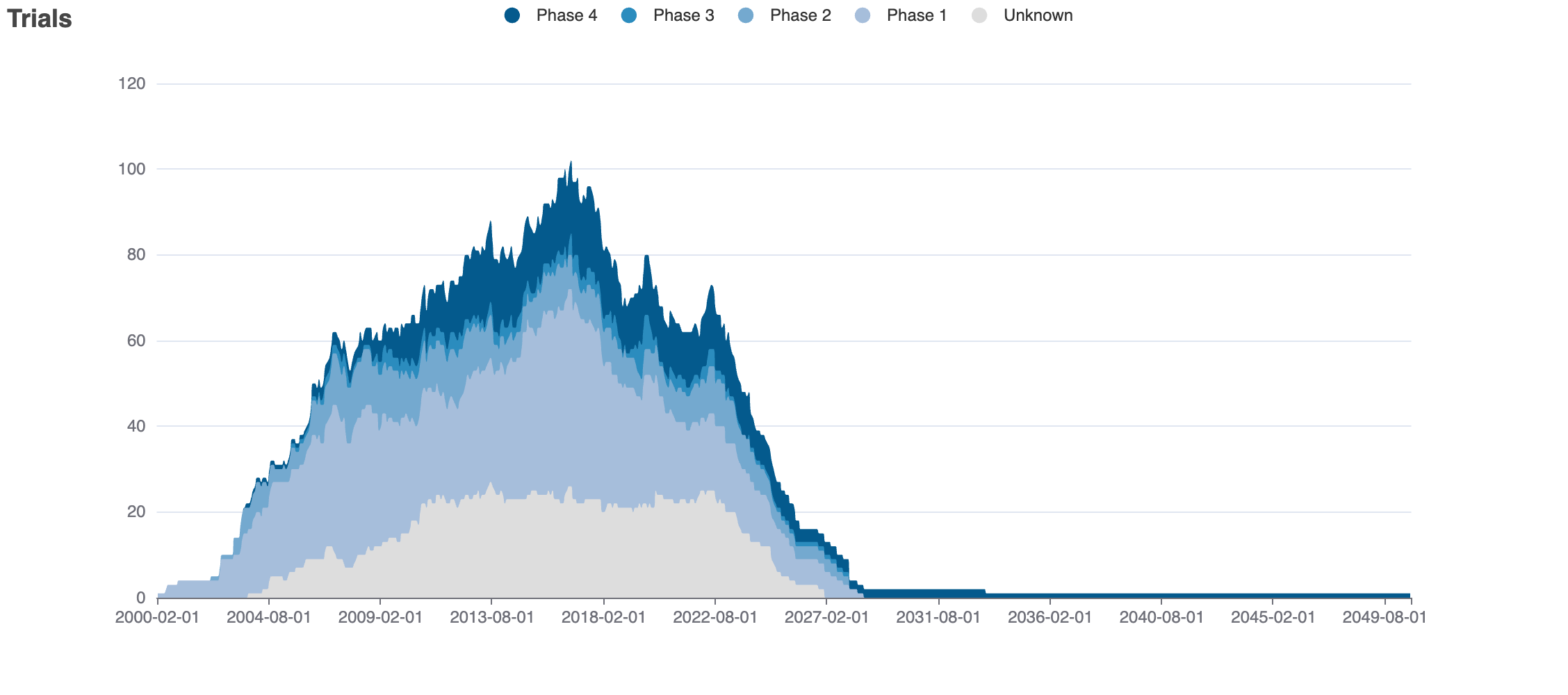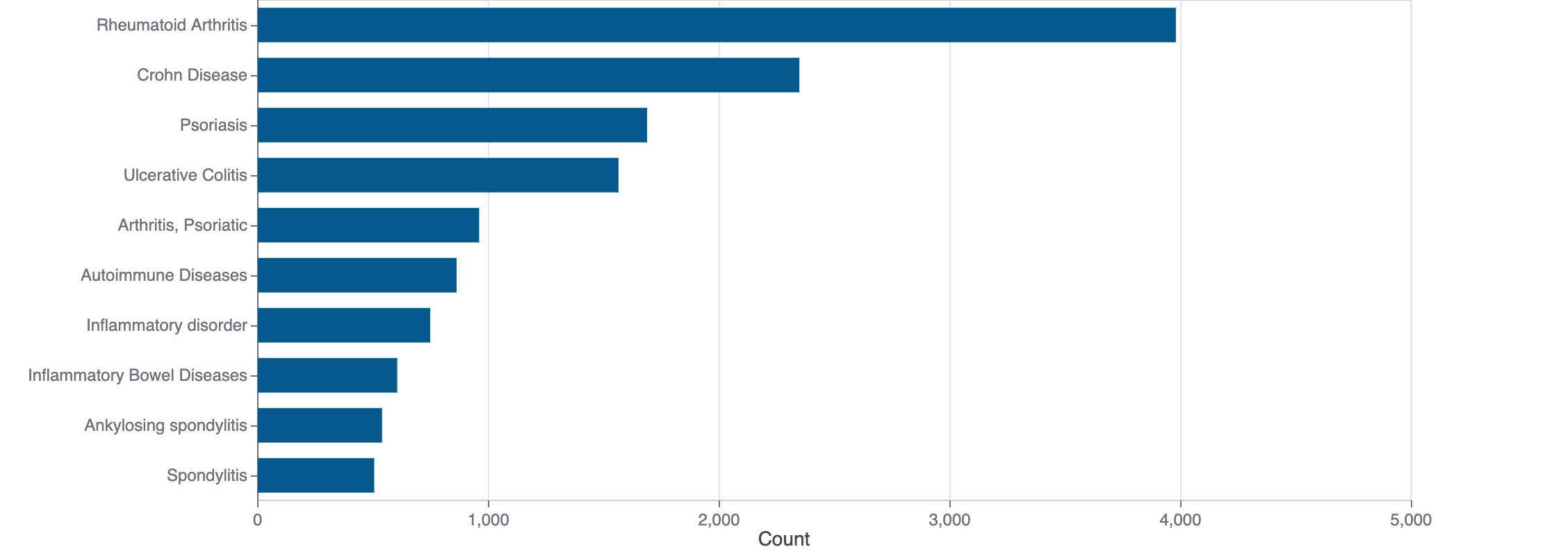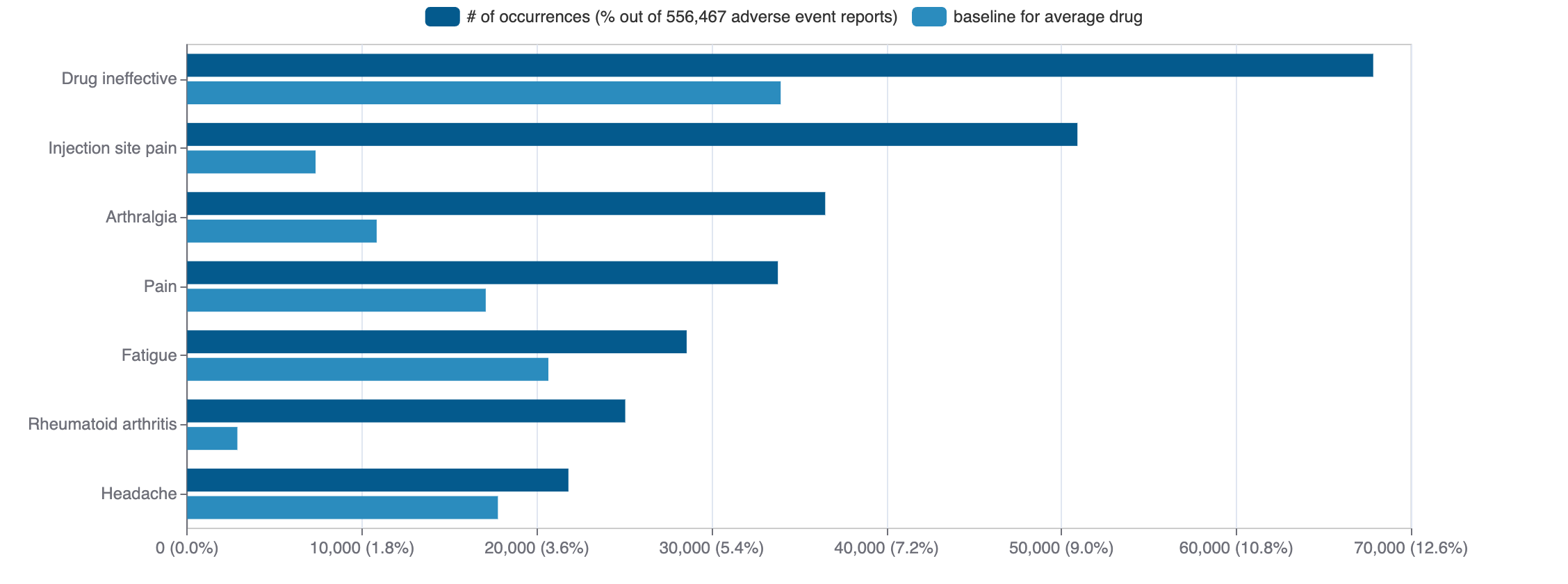Halofantrine
Halfan (halofantrine) is a small molecule pharmaceutical. Halofantrine was first approved as Halfan on 1992-07-24. It is used to treat falciparum malaria, malaria, and vivax malaria in the USA. It is known to target voltage-gated inwardly rectifying potassium channel KCNH2; potassium voltage-gated channel subfamily H member 2.
Download report
Favorite
Events Timeline
Commercial
Clinical
Drug
Target
Variants
Financial
Trends
Safety
Events Timeline
5D
1M
3M
6M
YTD
1Y
2Y
5Y
Max
Events
FDA approval date
EMA approval date
Patent expiration date
Study first post date
Last update post date
Start date
Primary completion date
Completion date
Results first post date

Mock data
Subscribe for the real data
Subscribe for the real data
Commercial
Therapeutic Areas
Therapeutic Area | MeSH |
|---|---|
| infections | D007239 |
Trade Name
FDA
EMA
No data
Labels
FDA
EMA
No data
Indications
FDA
EMA
Indication | Ontology | MeSH | ICD-10 |
|---|---|---|---|
| malaria | EFO_0001068 | D008288 | B54 |
| vivax malaria | EFO_0007445 | D016780 | B51 |
| falciparum malaria | EFO_0007444 | D016778 | B50 |
Agency Specific
FDA
EMA
No data
Patent Expiration
No data
HCPCS
No data
Clinical
Clinical Trials
77 clinical trials
View more details

Mock data
Subscribe for the real data
Subscribe for the real data
Indications Phases 4
Indication | MeSH | Ontology | ICD-10 | Ph 1 | Ph 2 | Ph 3 | Ph 4 | Other | Total |
|---|---|---|---|---|---|---|---|---|---|
| Human influenza | D007251 | EFO_0007328 | J11.1 | — | 1 | — | 1 | — | 2 |
| Urinary tract infections | D014552 | EFO_0003103 | N39.0 | — | — | — | 1 | — | 1 |
Indications Phases 3
Indication | MeSH | Ontology | ICD-10 | Ph 1 | Ph 2 | Ph 3 | Ph 4 | Other | Total |
|---|---|---|---|---|---|---|---|---|---|
| Hepatitis b | D006509 | — | — | 2 | 2 | 8 | — | — | 11 |
| Hepatitis | D006505 | — | K75.9 | 1 | 1 | 6 | — | — | 8 |
| Hepatitis a | D006506 | EFO_0007305 | B15 | 1 | 1 | 6 | — | — | 8 |
| Malaria | D008288 | EFO_0001068 | B54 | — | — | 3 | — | — | 3 |
| Herpes simplex | D006561 | — | B00 | — | — | 2 | — | — | 2 |
| Papillomavirus infections | D030361 | — | — | 1 | — | 1 | — | — | 2 |
| Falciparum malaria | D016778 | EFO_0007444 | B50 | — | — | 2 | — | — | 2 |
| Herpes genitalis | D006558 | EFO_0007282 | A60 | — | — | 1 | — | — | 1 |
| Hiv | D006678 | — | O98.7 | — | — | 1 | — | — | 1 |
| Myocardial infarction | D009203 | EFO_0000612 | I21 | — | — | 1 | — | — | 1 |
Show 2 more
Indications Phases 2
Indication | MeSH | Ontology | ICD-10 | Ph 1 | Ph 2 | Ph 3 | Ph 4 | Other | Total |
|---|---|---|---|---|---|---|---|---|---|
| Virus diseases | D014777 | — | B34 | — | 2 | — | — | — | 2 |
| Head and neck neoplasms | D006258 | — | — | — | 1 | — | — | — | 1 |
| Squamous cell carcinoma | D002294 | — | — | — | 1 | — | — | — | 1 |
| Squamous cell neoplasms | D018307 | — | — | — | 1 | — | — | — | 1 |
| Herpes zoster | D006562 | EFO_0006510 | B02 | — | 1 | — | — | — | 1 |
Indications Phases 1
Indication | MeSH | Ontology | ICD-10 | Ph 1 | Ph 2 | Ph 3 | Ph 4 | Other | Total |
|---|---|---|---|---|---|---|---|---|---|
| Depressive disorder | D003866 | EFO_1002014 | F32.A | 2 | — | — | — | — | 2 |
| Anxiety disorders | D001008 | EFO_0006788 | F41.1 | 1 | — | — | — | — | 1 |
| Infections | D007239 | EFO_0000544 | — | 1 | — | — | — | — | 1 |
Indications Without Phase
No data
Epidemiology
Epidemiological information for investigational and approved indications
View more details
Drug
General
| Drug common name | Halofantrine |
| INN | halofantrine |
| Description | Halofantrine is a drug used to treat malaria. Halofantrine's structure contains a substituted phenanthrene, and is related to the antimalarial drugs quinine and lumefantrine. Marketed as Halfan, halofantrine is never used to prevent malaria and its mode of action is unknown, although a crystallographic study showed that it binds to hematin in vitro, suggesting a possible mechanism of action. Halofantrine has also been shown to bind to plasmepsin, a haemoglobin degrading enzyme unique to the malarial parasites.
|
| Classification | Small molecule |
| Drug class | — |
| Image (chem structure or protein) |  |
| Structure (InChI/SMILES or Protein Sequence) | CCCCN(CCCC)CCC(O)c1cc2c(Cl)cc(Cl)cc2c2cc(C(F)(F)F)ccc12 |
Identifiers
| PDB | — |
| CAS-ID | 69756-53-2 |
| RxCUI | — |
| ChEMBL ID | CHEMBL1107 |
| ChEBI ID | — |
| PubChem CID | 37393 |
| DrugBank | DB01218 |
| UNII ID | Q2OS4303HZ (ChemIDplus, GSRS) |
Target
Agency Approved
No data
Alternate
KCNH2
KCNH2
Organism
Homo sapiens
Gene name
KCNH2
Gene synonyms
ERG, ERG1, HERG
NCBI Gene ID
Protein name
potassium voltage-gated channel subfamily H member 2
Protein synonyms
Eag homolog, Eag-related protein 1, ERG-1, Ether-a-go-go-related gene potassium channel 1, ether-a-go-go-related potassium channel protein, Ether-a-go-go-related protein 1, H-ERG, hERG-1, hERG1, human ether-a-go-go-related, long QT syndrome type 2, potassium channel, voltage gated eag related subfamily H, member 2, potassium voltage-gated channel, subfamily H (eag-related), member 2, Voltage-gated potassium channel subunit Kv11.1
Uniprot ID
Mouse ortholog
Kcnh2 (16511)
potassium voltage-gated channel subfamily H member 2 (O35989)
Variants
No data
Financial
No data
Trends
PubMed Central
Top Terms for Disease or Syndrome:

Mock data
Subscribe for the real data
Subscribe for the real data
Additional graphs summarizing 1,982 documents
View more details
Safety
Black-box Warning
No Black-box warning
Adverse Events
© 2020-2025 Collaborative Drug Discovery Inc. (CDD) | Terms of Use
